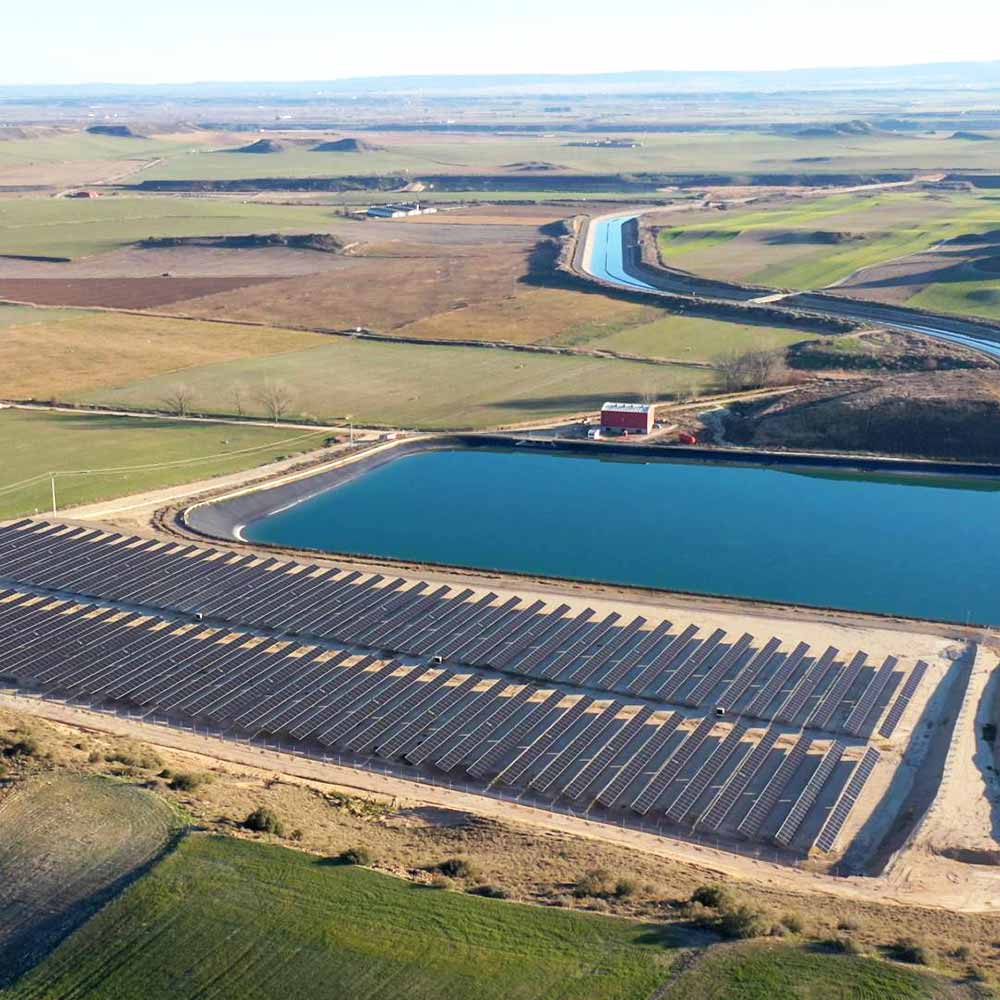If addressing climate change defines the great challenge of the 20th century, adapting food and energy production strategies emerges as pivotal in combatting it. The choices made in livestock farming and agriculture, from reducing carbon footprints to adopting renewable energies, will shape humanity’s future in the coming decades. Scientific and technological advancements are enhancing global sustainability, with a recent example being the application of renewable energies to agriculture, known as agrovoltaics.
This article covers:
What is agrovoltaic energy?
Agrovoltaic, or agro-photovoltaic energy, involves using farmland to install solar panels. Originating from a concept developed by German scientists at the Fraunhofer Institute in 1981, this strategy enables the coexistence of agricultural uses and energy production on the same farmland. This allows for the simultaneous generation of energy and food without expanding the total area used, fostering attractive synergies.
These systems not only supply electricity to the grid but also power on-site farms, powering sensors, IoT devices, irrigation systems, or lighting.
There are three primary modalities:
- Mounted directly on the ground. These panels interspersed in the crops or on their perimeter provide shade for the animals and allow the growth of grasses for grazing.
- Elevated solar panels. They are installed at a certain distance from the ground, which allows the transit of animals to graze or even the presence of certain crops under them.
- Photovoltaic greenhouses. These panels are installed on the roofs of greenhouses, either on land or in floating gardens, as discussed in this article.
Why use it?
This innovative application of renewable energy offers numerous benefits for professionals, the energy industry, consumers, and the environment. Key reasons to adopt agrovoltaics include:
- Increased soil productivity by up to 60%.
- Expanded usable area for solar energy.
- Protection of crops and livestock from excessive solar radiation.
- Enhanced panel efficiency through cooling with ambient humidity.
- Generation of new income sources for the primary sector.
Despite being a recent solution, its popularity is growing. According to statistics from the Fraunhofer Institute, installed capacity increased from 5 MW in 2012 to 14 GW in 2021. Countries like South Korea plan to create 100,000 installations on agricultural land to combat rural depopulation and provide farmers with an additional $1,000 pension from electricity sales.

Furthermore, in specific crops such as potatoes, cotton, or tomatoes, the protection provided by photovoltaic panels boosts production by up to 40%. Another crop benefiting from these installations is vineyards, as the production and ripening of grapes are highly sensitive to global warming.
Solar-powered irrigation – Another agricultural application of renewables
As mentioned earlier, this approach to renewable energy not only enables the generation of electricity on farmland for the grid but also provides energy for agricultural activities. In this context, one application of renewables similar to agrovoltaic energy is solar-powered irrigation.
Montesusín, a small Aragonese town primarily dedicated to cultivating barley, wheat, corn, and alfalfa, faced a challenge with the high energy cost for irrigation systems, impacting farm profitability. To address this, the irrigation community chose an inventive solution: installing solar panels with a peak power exceeding 1.5 megawatts.
This is the world’s most extensive irrigation system powered by a solar plant without batteries. In addition to supplying electricity to pump water for irrigation, unused surplus energy is fed back into the grid, generating an additional benefit for farmers. The system, which is 100% renewable, avoids the emission of 1300 tons of CO2 per year.
For more information on renewable energy types, including wave and tidal power or new hybrid wind and photovoltaic solutions, subscribe to our newsletter at the bottom of this page.
Source:



